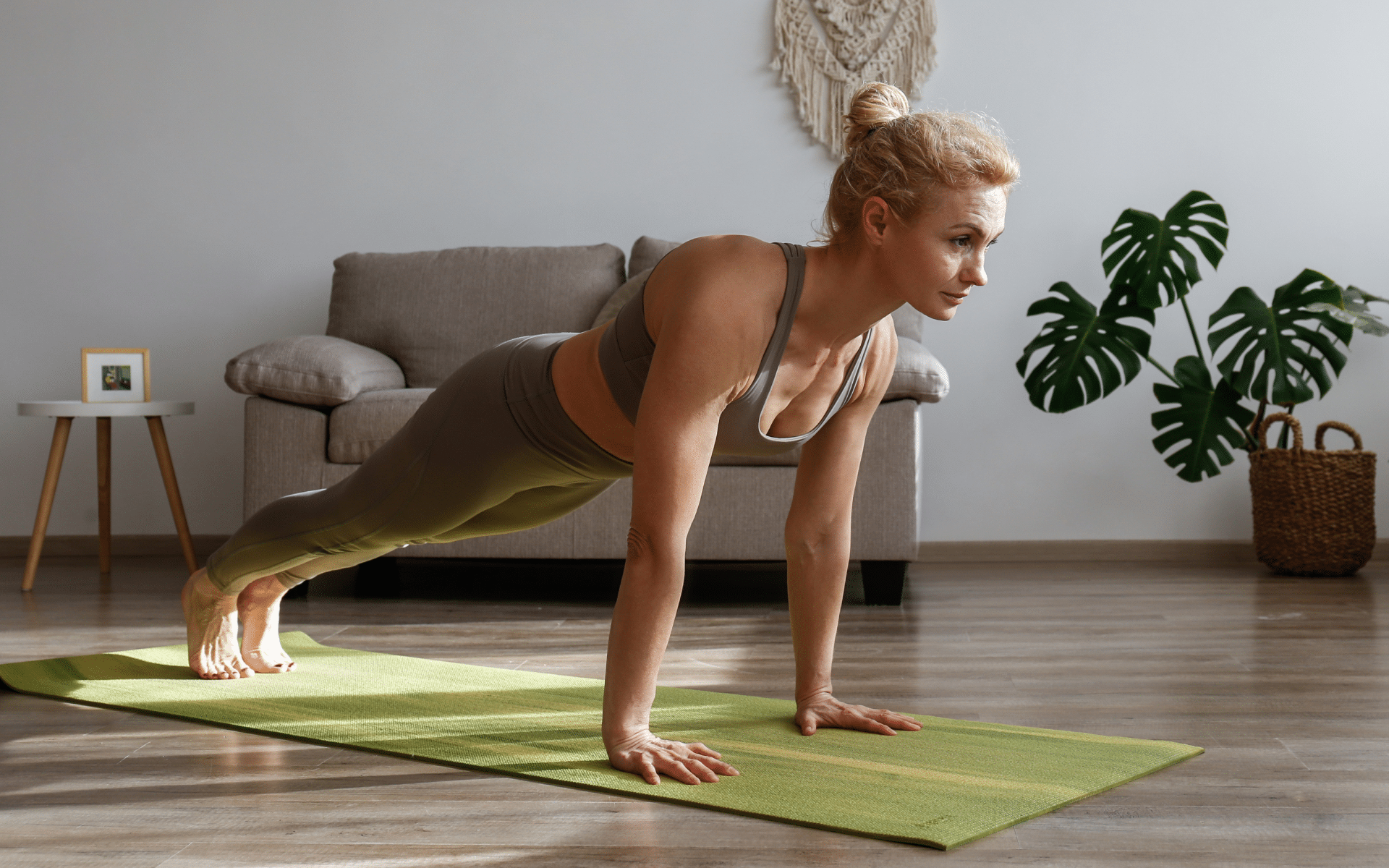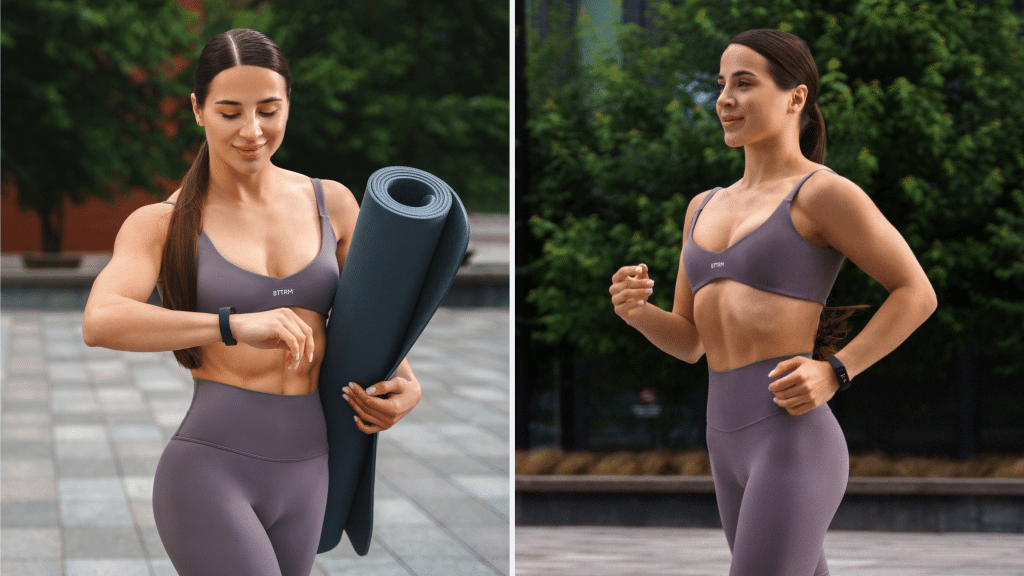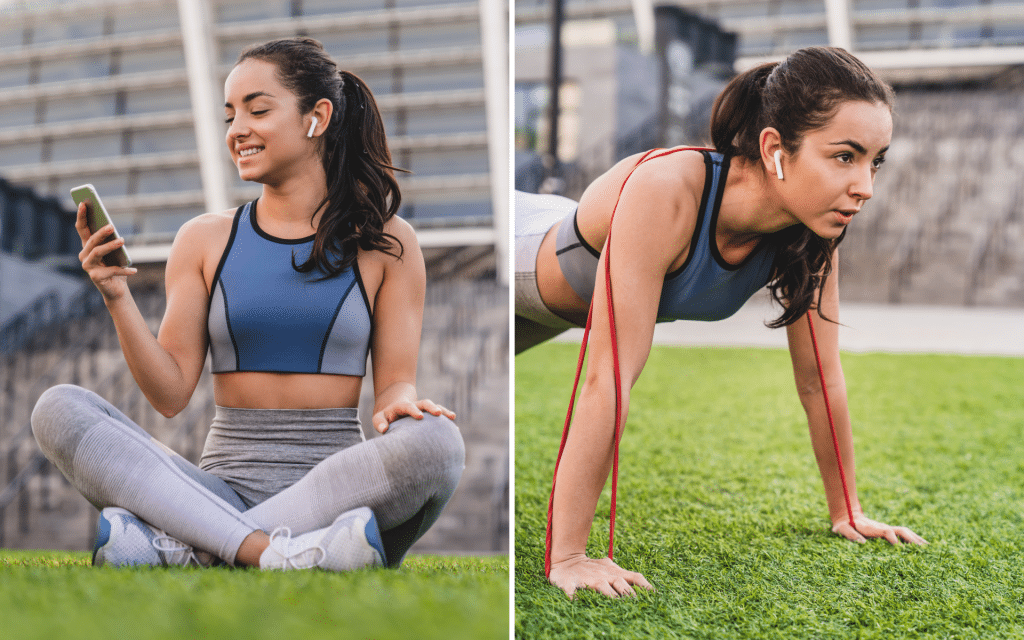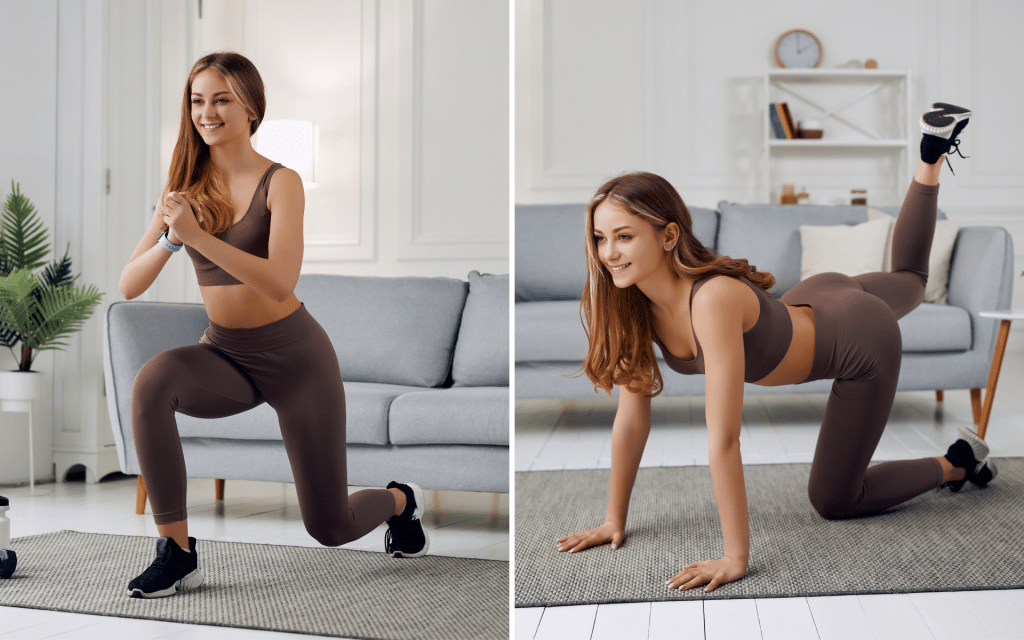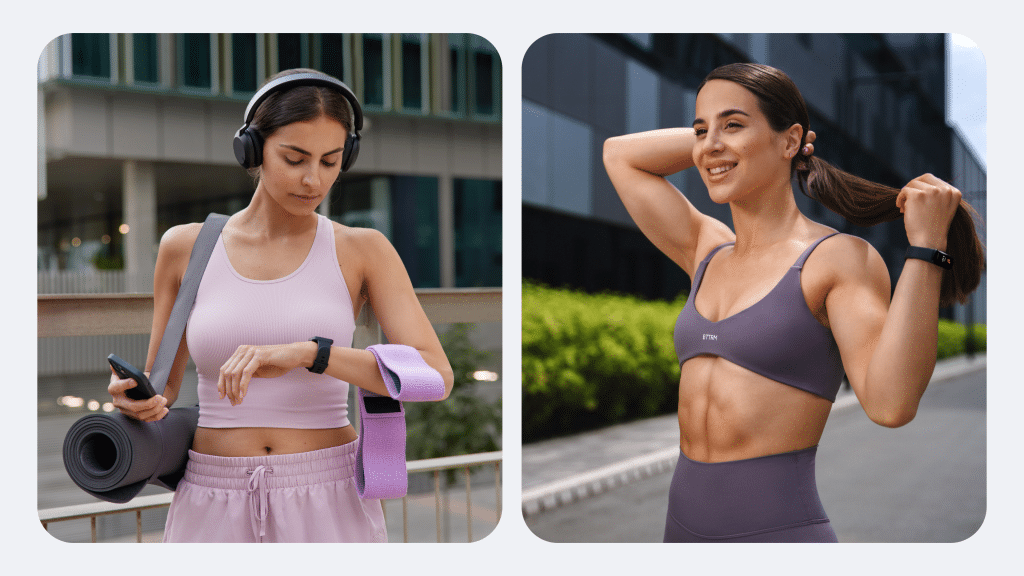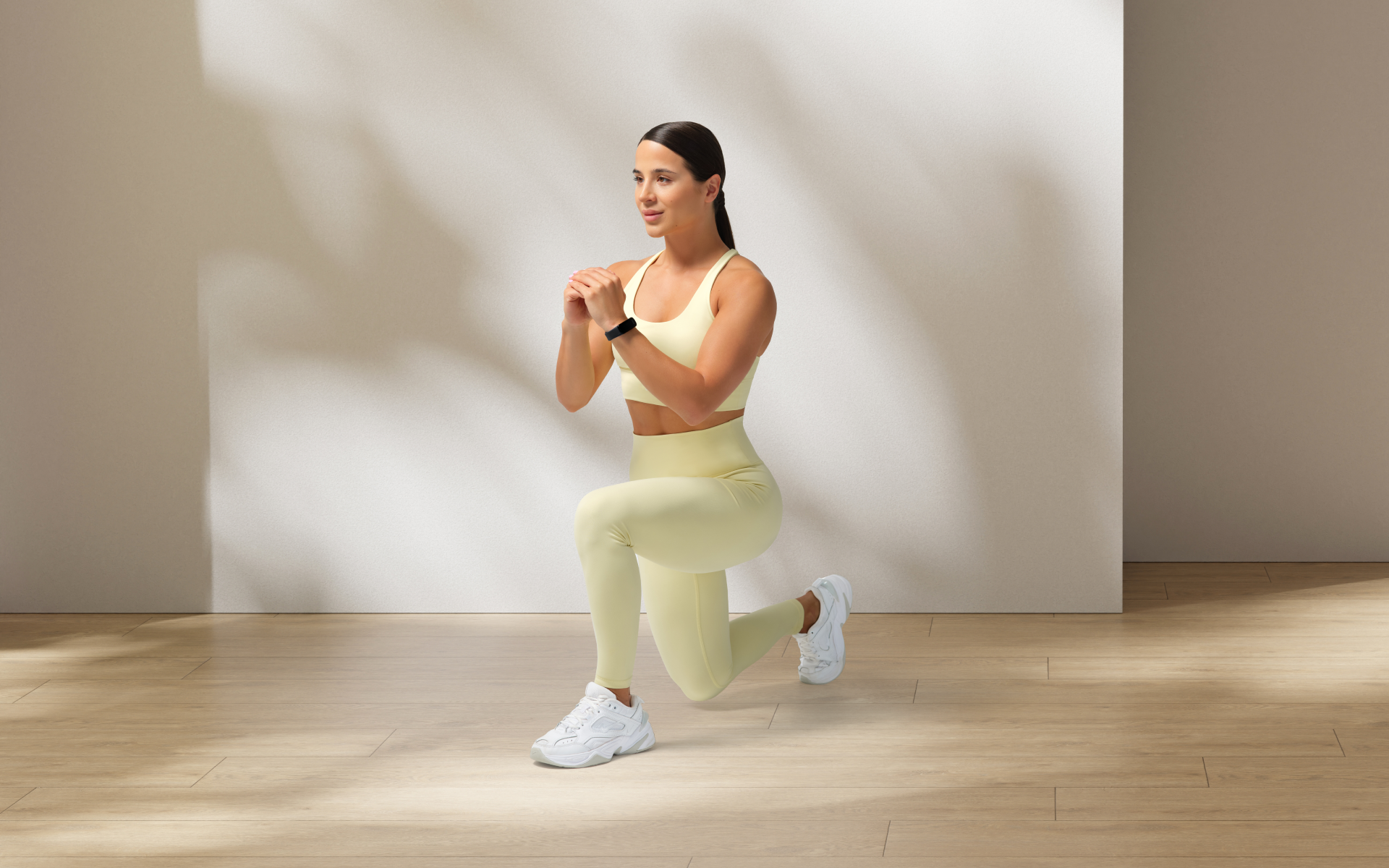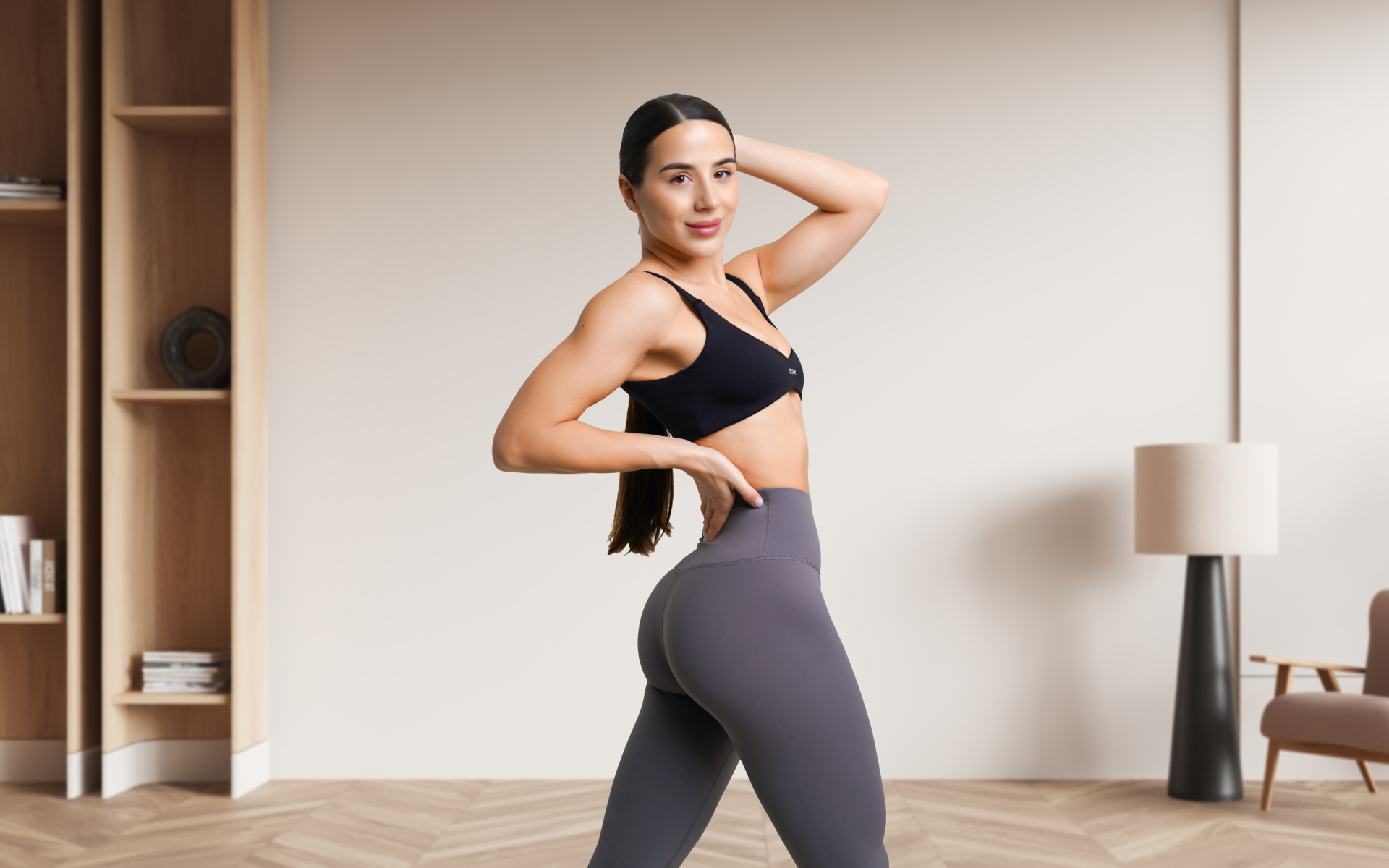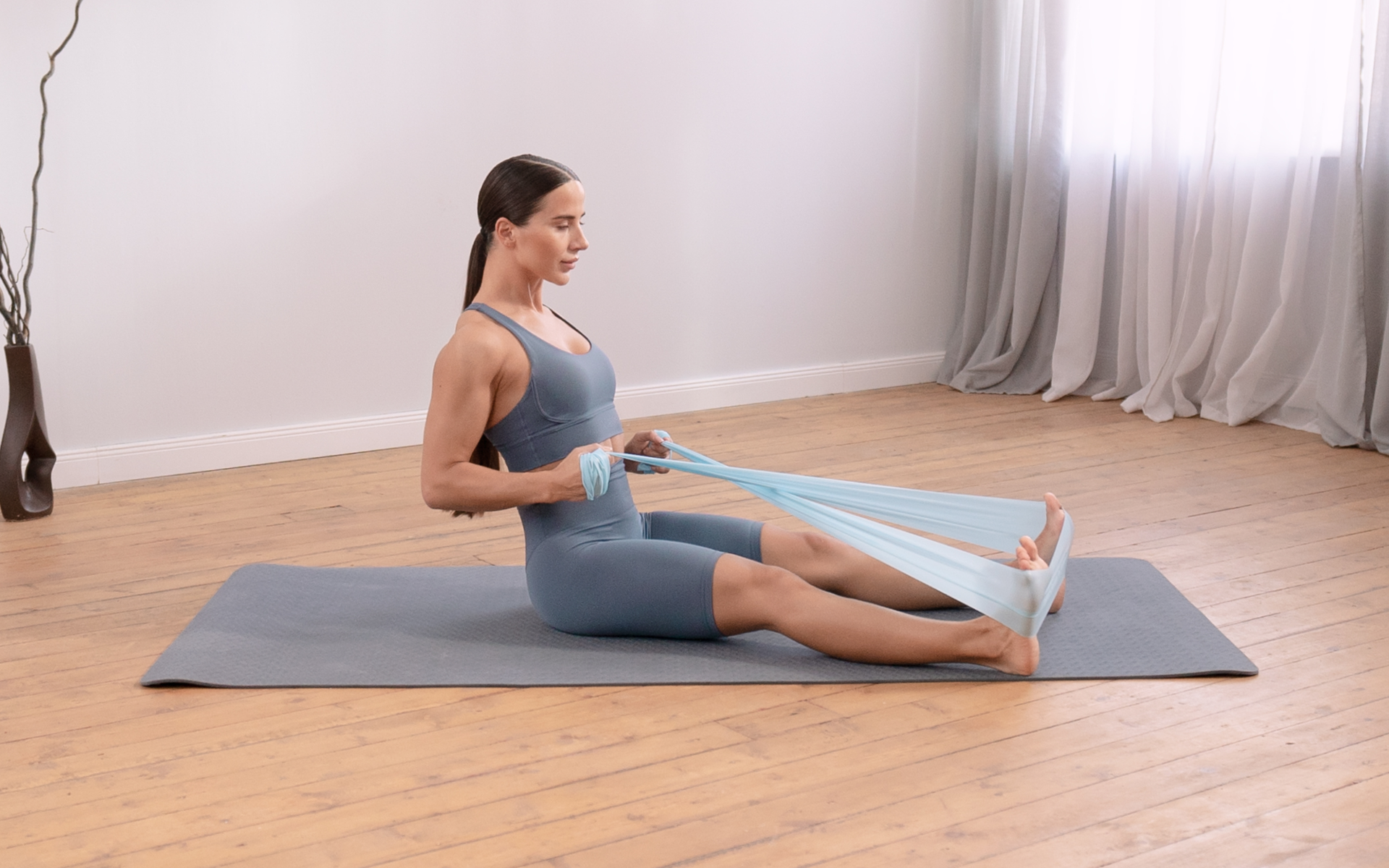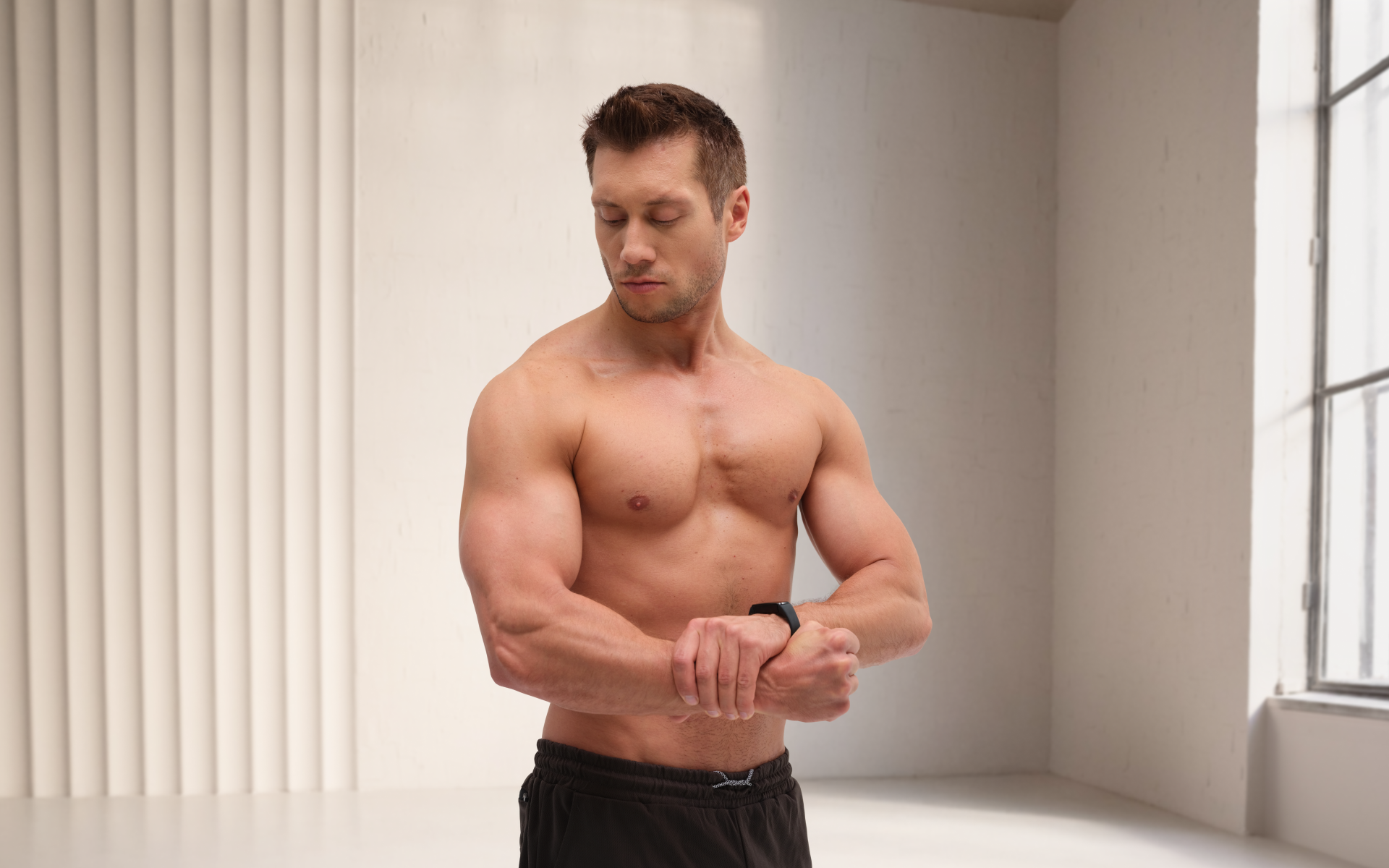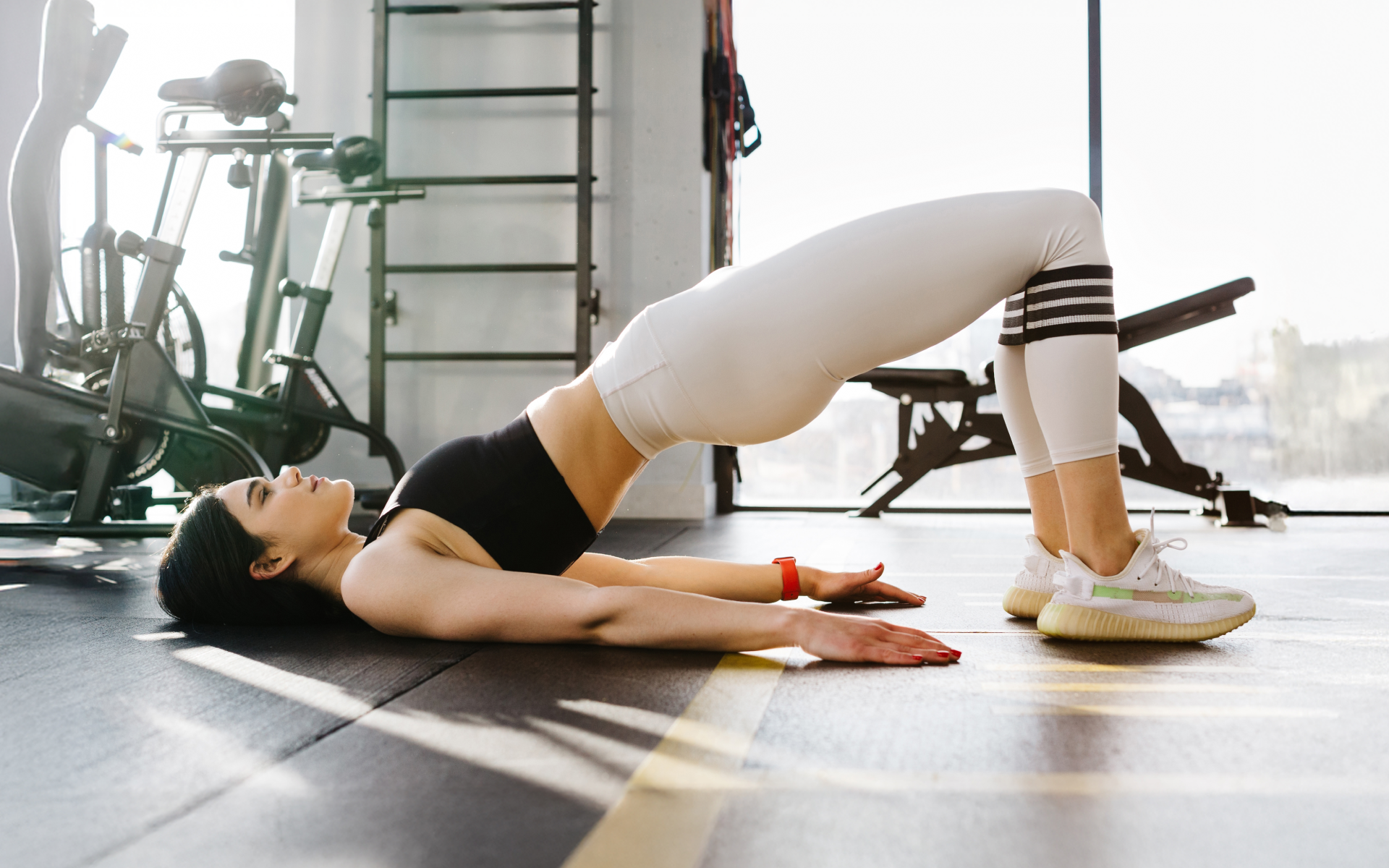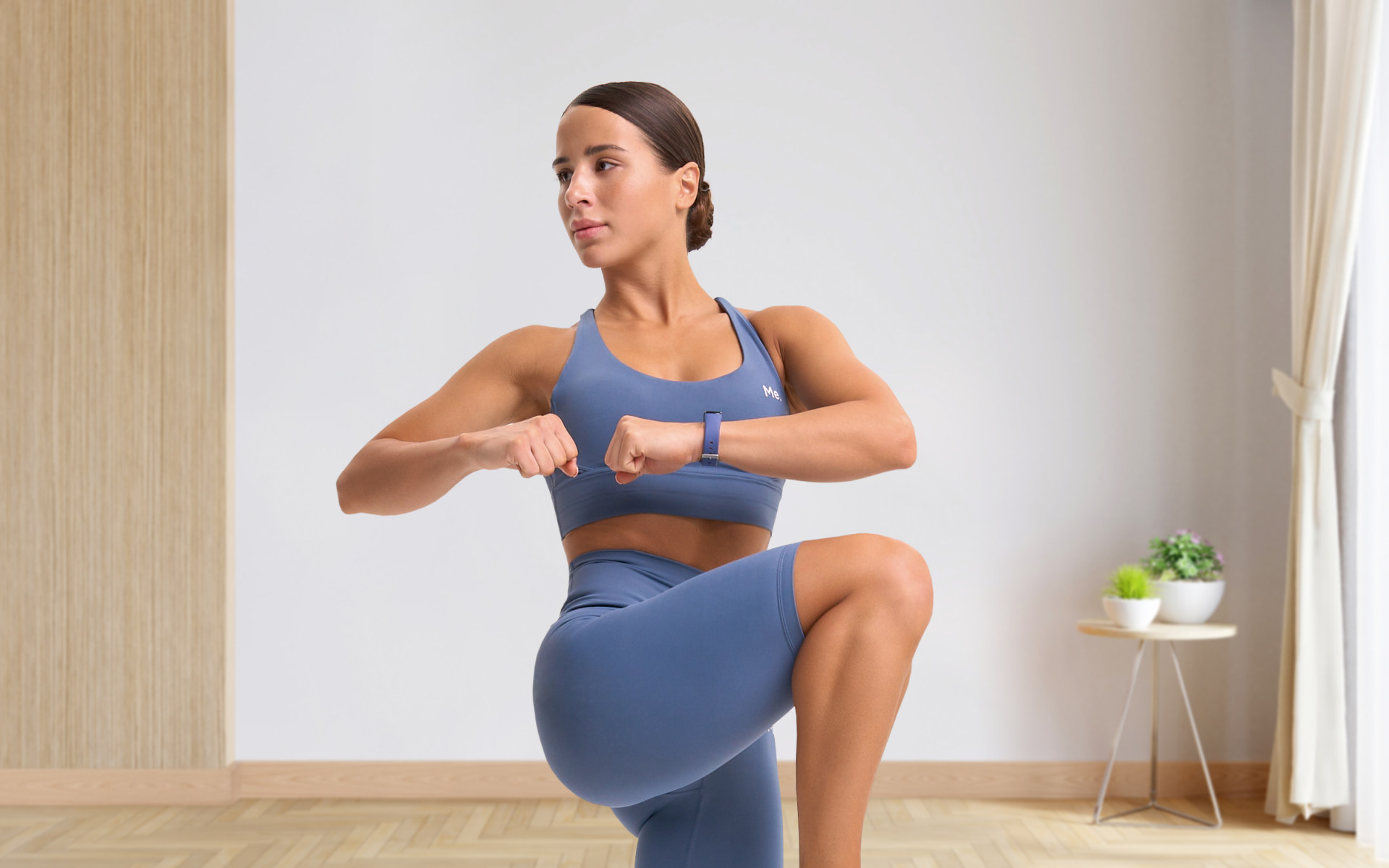Progressively challenging your body is the most effective way to see results from any workout (1). You can achieve this progression with calisthenics by learning more complex exercises and incorporating them into your routine.
As an intermediate-level calisthenics enthusiast, you’ve mastered the basics and are ready to take your workouts to the next level. That, however, is easier said than done, as with various exercises to choose from, it’s easy to get overwhelmed and need help knowing where to start.
We’ll discuss all you need to know about a calisthenics workout plan for intermediate levels, including 7 exercises that will challenge your body and help you achieve your fitness goals.
What Is a Calisthenics Workout for Intermediates?
A calisthenics workout plan intermediate is a form of next-level bodyweight training involving more complex exercises and routines than beginner-level ones.
These exercises usually require higher strength, balance, and coordination, making them ideal for someone who has already developed a solid foundation in calisthenics.
Intermediate-level workouts aim to progressively increase the difficulty and intensity of exercises, aiming to perform more advanced calisthenics routines such as:
- Muscle-ups
- One-arm pull-ups
- Handstand push-ups
They also focus on building core strength and improving overall body control.
How to Do Intermediate Calisthenics?
To do intermediate calisthenics, you’ll need to have a strong foundation in the basic exercises such as:
- Push-ups
- Pull-ups
- Squats
- Planks.
This foundation in the basic calisthenics exercises means performing them correctly and regularly incorporating them into your routine.
Once you’ve mastered the basics, you can move on to more challenging variations of these exercises, such as:
- Diamond push-ups
- L-sit pull-ups
- Pistol squats
Focus on maintaining good form and gradually increasing the difficulty level rather than jumping straight into advanced moves.
You might wonder if you’re ready to move on to intermediate-level calisthenics.
A good benchmark is:
- Performing 3 sets of 10 repetitions for basic exercises (squats and push-ups) with good form
- Able to hold a plank for at least 90 seconds.
- Pull-ups and dips should have become staples in your routine, and you can comfortably do at least 10 reps of each.
- You should feel confident and in control of your body during workouts.
If you meet these criteria, you might be ready for intermediate calisthenics.
Regarding intermediate calisthenics, incorporating some equipment (although optional) is highly recommended by coaches and fitness experts (2).
When it comes to weight loss, progress is made by inches, not miles, so it’s much harder to track and a lot easier to give up. The BetterMe: Health Coaching app is your personal trainer, nutritionist, and support system all in one. Start using our app to stay on track and hold yourself accountable!
The equipment includes:
- Pull-up bar: Essential for pull-up variations such as chin-ups, L-sit pull-ups, and muscle-ups.
- Dip bars: Great for dips and other exercises targeting the triceps and chest muscles.
- Resistance bands: Use these to assist in advanced exercises such as one-arm pull-ups or weighted dips. They can also add resistance. which builds strength and muscle.
- Parallettes: Use these small parallel bars for exercises such as L-sits, handstand push-ups, and planche progressions.
- Weighted vest: Adding weight to your body can help increase the difficulty of exercises and promote muscle growth.
- Rings: This versatile equipment works for various exercises such as ring dips, ring push-ups, and muscle-ups.
What Is the Best Workout Routine for Intermediate?
The best workout routine for intermediate-level calisthenics is ultimately one that you can consistently and progressively challenge your body. This structured and progressive approach ensures the routine fits your schedule and gives you tangible results.
The American College of Sports Medicine recommends doing strength training exercises at least 2-3 times a week, with at least one day of rest (3).
When translated for intermediate-level calisthenics, this could mean breaking down your routine into 3-4 days, focusing on different muscle groups each day.
For example:
- Day 1: Upper body (muscle-ups, archer push-ups, typewriter pull-ups)
- Day 2: Lower body (pistol squats, jump squats)
- Day 3: Core exercises (dragon flags, handstand push-ups)
- Day 4: Full body calisthenics workout
Get started with this customizable 30 day calisthenics workout plan for all fitness levels.
Read more: Calisthenics Supersets: Effective Workouts to Build Strength and Endurance
7 Intermediate Calisthenics Exercises for a Next-Level Workout
These exercises are more complex variations of the basic moves, designed to target multiple muscle groups simultaneously. Incorporating different angles and movements challenges your body in new ways, promoting greater strength, stability, and coordination. They are:
1. Australian Pull-ups
Australian pull-ups, or bodyweight rows, are great for building back, shoulder, and arm strength without advanced equipment. They are a less intense alternative to pull-ups, making them ideal for those improving their technique.
To perform Australian pull-ups:
- Set a bar at hip height using a Smith machine, squat rack, or any sturdy horizontal bar.
- Lie beneath the bar and grip it with an overhand hold, hands slightly wider than shoulder-width apart.
- Extend your legs in front of you, keeping your body straight from head to heels, supported on your heels.
- Engage your core and pull your chest towards the bar by bending your elbows and squeezing your shoulder blades together.
- Pause at the top, then slowly lower yourself back to the starting position.
- Maintain control and repeat for the desired reps, keeping your body straight and aligned.
2. Clapping Push-ups
Clapping push-ups are a dynamic exercise designed to improve explosive power and enhance upper body strength. They engage the chest, shoulders, triceps, and core, improving coordination and speed.
To perform clapping push-ups:
- Begin in a standard push-up position with your hands shoulder-width apart and your body in a straight line from head to heels.
- Lower your body towards the ground as you would in a regular push-up.
- As you push back up, exert more force than usual to launch your upper body off the ground.
- Quickly clap your hands together, then return them to their original position.
- Land gently and immediately lower yourself for the next repetition.
- Continue till you reach your set number of repetitions
3. Pistol Squats
Pistol squats are a single-leg squat variation that targets your glutes, quads, hamstrings, and core. They require strength, flexibility, balance, and coordination, making them an excellent lower-body exercise.
To execute a pistol squat:
- Stand with your feet shoulder-width apart and arms extended in front of you for balance.
- Lift one leg off the ground and extend your knee fully in front of you, keeping your leg straight and parallel to the floor.
- Begin the squat by pushing your hips back and bending your standing knee, lowering your body as far as possible while maintaining balance.
- Keep your chest up and core engaged throughout the movement.
- Push through your heel to return to the starting position.
- Continue for the desired repetitions, then switch to the other leg.
4. Dragon Flags
Dragon flags are an advanced core exercise requiring significant strength and control, primarily targeting the abdominal muscles and engaging the obliques, hip flexors, and lower back. This exercise, popularized by Bruce Lee, demands excellent core stability and full-body tension.
To perform dragon flags:
- Lie on a bench or the floor with your hands gripping the bench or holding onto a sturdy object overhead.
- Extend your legs straight up towards the ceiling, keeping them together.
- Lift your hips and lower back off the surface into a shoulder stand position, maintaining a straight line from shoulders to toes.
- Slowly lower your entire body, from shoulders to toes, towards the ground in a controlled manner without allowing your legs to touch the surface.
- Keep your core tight, and raise your legs and hips back to the starting position.
- Repeat for the required repetitions, focusing on maintaining control throughout the movement.
5. L-sit Pull-ups
L-sit pull-ups combine the core-strengthening aspect of an L-sit with the upper-body challenge of a pull-up, making it a highly effective compound exercise.
The exercise targets the lats, biceps, shoulders, and core, requiring core stability and upper-body strength.
To perform L-sit pull-ups:
- Start in a dead hang on a pull-up bar with your arms extended and hands shoulder-width apart.
- Engage your core, lifting your legs straight out in front of you, parallel to the floor, forming an “L” shape with your body.
- Maintain the L-sit position as you pull up towards the bar until your chin is above it.
- Slowly lower yourself back to the starting hang position while keeping your legs raised.
- Repeat the movement for the set number of repetitions, keeping your core engaged and legs steady throughout.
6. Handstand Push-ups
Handstand push-ups are challenging and target the shoulders, triceps, and upper chest. Performing handstand push-ups builds upper body strength and enhances balance and coordination due to the inverted position.
To perform handstand push-ups:
- Begin by kicking up into a handstand position against a wall for safety and support, with your hands shoulder-width apart.
- Keep your body straight and core engaged, lowering your head towards the ground by bending your elbows.
- Pause briefly at the bottom before pushing back up to extend your arms and return to the starting position.
- Maintain a controlled movement throughout, focusing on stability and balance.
- Continue for the target number of repetitions, ensuring proper form to prevent injury.
7. Ring Dips
Ring dips are an excellent compound exercise that builds strength in the chest, triceps, and shoulders. Using rings adds an extra stability challenge, engaging more stabilizing muscles and improving coordination.
To Execute ring dips:
- Adjust the rings to a suitable height and grab them with both hands, lifting your body off the ground into the starting dip position with arms straight.
- Lower your body by bending your elbows and keeping the rings close to your torso until your shoulders are below your elbows.
- Engage your core for stability, then push back up by straightening your arms to return to the starting position.
- Keep your movements controlled to avoid excessive swinging or instability.
- Complete the planned number of repetitions, focusing on maintaining good form throughout.
Calisthenics Intermediate Workout No Equipment
You can practice intermediate calisthenics without any equipment. However, you should focus on these 3 factors and the various exercises that don’t require equipment for the best results:
- Full-Body Engagement: Intermediate calisthenics workouts typically include exercises that target multiple muscle groups simultaneously.
Examples include push-ups, squats, and planks, which help build strength, endurance, and flexibility.
- Progressive Overload: These workouts often incorporate variations and increased difficulty to continue making progress.
For instance, you might perform one-legged squats (pistol squats) or decline push-ups to challenge your muscles further.
- Core Strength Focus: Many intermediate routines emphasize core stability and strength.
Exercises like hollow holds, leg raises, and mountain climbers are common, helping to improve balance and overall functional fitness.
Swap a pull-up bar for a sturdy table or focus on the movements and exercises you only need your body weight to do (4).
Read more: 8-Week Calisthenics Program for Your Body Transformation
How Many Days a Week Should a Intermediate Workout?
According to the American College of Sports Medicine, intermediate exercisers should aim to work out 3-5 days a week, with at least one rest day between workouts (3). This rest period allows for adequate recovery time and prevents overtraining.
However, the specific number of days per week will vary depending on individual fitness goals, availability, and intensity of workouts. It is crucial to listen to your body and make adjustments accordingly.
For example, if you are feeling fatigued or experiencing muscle soreness that lasts longer than a day or two, take an additional rest day or lower the intensity of your workout.
Additionally, variety is crucial in an intermediate workout routine. Many fitness experts recommend incorporating strength training, cardiovascular exercise, and flexibility work throughout the week (5).
If you wish to free yourself from all the extra pounds that have been weighing you down for way too long, start using the BetterMe: Health Coaching app and overhaul your entire life!
Can You Build Muscle in 8 Weeks with Calisthenics?
The rate at which an individual can build muscle depends on various factors, such as genetics, diet, and training intensity. However, with consistent calisthenics training and proper nutrition, it is possible to see significant muscle growth in 8 weeks.
To maximize muscle-building potential with calisthenics, you must progressively overload your muscles by increasing the difficulty of exercises over time (6).
Achieve progressive overload by doing this:
- Perform more repetitions or sets
- Use resistance bands or weighted vests
- Progress to more challenging variations of exercise
- Consume sufficient protein and calories to support muscle growth.
A recommended daily protein intake for individuals looking to build muscle would be around 0.8-1 gram of protein per pound of body weight (7).
What Is the Hardest Skill in Calisthenics?
We can’t consider one specific skill the hardest in calisthenics, as it varies depending on individual strengths and weaknesses.
However, some calisthenics workout for advanced trainees require a high level of strength, coordination, and technique and may be more challenging for most individuals.
Some examples of challenging calisthenics skills include:
- Muscle-ups: Require pulling yourself up from a hanging position on a bar or rings and transitioning into a dip at the top.
- One-arm pull-ups/chin-ups: Involve pulling your entire body weight with one arm.
- Handstand push-ups: Require exceptional balance, stability, and upper body strength.
No, 25 is not too old for calisthenics. You or a coach can adapt a calisthenics workout plan for all age groups and fitness levels. Starting calisthenics at 25 allows you to build strength, flexibility, and endurance effectively. It’s always possible to begin calisthenics, as it focuses on bodyweight movements that improve functional fitness and you can set them to your specific capabilities and goals. 30 minutes of calisthenics can be sufficient, mainly if you focus on high-intensity workouts that target multiple muscle groups. Short, intense sessions can help improve cardiovascular fitness, build muscle, and enhance overall endurance (8). Ensure the exercises are well-structured and that you maintain good form throughout the routine. Combining 30-minute sessions with a balanced diet and adequate rest can yield significant fitness improvements depending on your goals. Getting “ripped” means having a low body fat percentage and visible muscle definition. While calisthenics can help build muscle and improve body composition, achieving a “ripped” physique relies heavily on nutrition. There may need to be more than just Calisthenics for some individuals to achieve a very low body fat percentage. However, with proper diet and consistent training, getting ripped using calisthenics as the primary form of exercise is possible. Lifting weights 5 times a week is not necessarily too much, but it depends on your training intensity, goals, and recovery capacity. For advanced lifters or those training with specific goals, such as bodybuilding or strength competitions, a 5-day routine can be beneficial. However, listen to your body, ensure adequate rest and recovery, and avoid overtraining. A well-structured program that balances intensity and rest will prevent injury and optimize results.Frequently Asked Questions
Is 25 too old for calisthenics?
Is 30 minutes of calisthenics enough?
Can you get ripped with calisthenics alone?
Is lifting weights 5 times a week too much?
The Bottom Line
Calisthenics offers an excellent path for intermediate exercisers to elevate their fitness game. By incorporating various exercises, such as muscle-ups, archer push-ups, and dragon flags, you can effectively target multiple muscle groups while enhancing strength, flexibility, and coordination.
Remember, the key to success in calisthenics lies in progression and variety. As you challenge yourself with new movements, listen to your body to prevent injury and promote continuous improvement.
DISCLAIMER:
This article is intended for general informational purposes only and does not serve to address individual circumstances. It is not a substitute for professional advice or help and should not be relied on for making any kind of decision-making. Any action taken as a direct or indirect result of the information in this article is entirely at your own risk and is your sole responsibility.
BetterMe, its content staff, and its medical advisors accept no responsibility for inaccuracies, errors, misstatements, inconsistencies, or omissions and specifically disclaim any liability, loss or risk, personal, professional or otherwise, which may be incurred as a consequence, directly or indirectly, of the use and/or application of any content.
You should always seek the advice of your physician or other qualified health provider with any questions you may have regarding a medical condition or your specific situation. Never disregard professional medical advice or delay seeking it because of BetterMe content. If you suspect or think you may have a medical emergency, call your doctor.
SOURCES:
- Progression of volume load and muscular adaptation during resistance exercise (2014,nih.gov)
- What is calisthenics? (2020, medicalnewstoday.com)
- ACSM STRENGTH TRAINING GUIDELINES (2009,pfswellness.com)
- Full-Body Home Workout Plan for Beginners – No Equipment (n.d., calisthenics.com)
- New research finds half-cardio, half-strength training reduces cardiovascular disease risks (2024, sciencedaily.com)
- Effect of Progressive Calisthenic Push-up Training on Muscle Strength and Thickness (2018,nih.gov)
- A systematic review, meta-analysis and meta-regression of the effect of protein supplementation on resistance training-induced gains in muscle mass and strength in healthy adults (2020,bjsm.bmj.com)
- Research shows that short, intense workouts are beneficial (2023,uclahealth.org)
